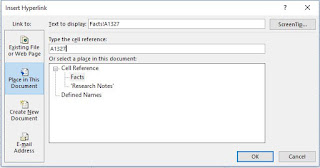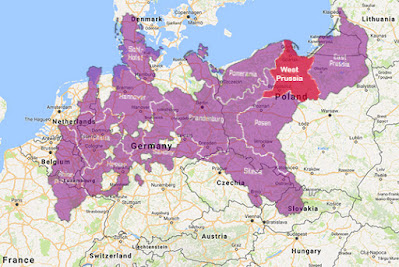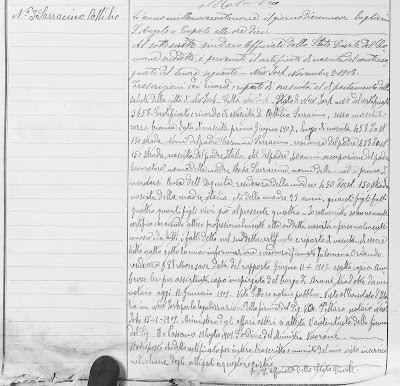Mixed in with my relatives in the 1930 census I have a mystery family. I've been gathering evidence, but I still don't know who they are.
 |
| How is Patsy Ferro my great uncle's nephew? |
The more pieces I find, the closer I get to solving this mystery. That's why I created a timeline of found facts.
You can use this process to help solve your own family tree mysteries.
It all began with an extra family in the 1930 census. Living with my grandmother's uncle Semplicio Saviano and his children were:
- Patsy (a nickname for Pasquale) Ferro, age 29, married for 10 years, born in Italy, a building contractor. He is listed as Semplicio's nephew.
- Josephine Ferro, age 26, born in Italy. She is listed as Semplicio's niece.
- Antonette Ferro, age 6, born in Italy. She is listed as Semplicio's grand-niece.
If Patsy was really Semplicio's nephew, then either his sister or his wife's sister should have married a man named Ferro. But they didn't.
I found five more documents for the Ferro family.
1923 Ship Manifest
On 12 November 1923, Pasquale Ferro arrived in Boston. He was from Baselice, Italy, which happens to be the hometown of my grandfather, Adamo Leone. Since my grandmother was Semplicio's niece, is Adamo Leone the relative of Pasquale Ferro?
Pasquale states that he is joining his cousin Leonardo Canonico at 260 East 151st Street in the Bronx. Well, now. Isn't that a coincidence? That is where my newlywed grandparents lived. The building had only three or four apartments, and all but one belonged to my closest relatives.
I recognize the name Canonico as a common name from Baselice, Italy, too.
The ship manifest originally stated that Pasquale Ferro was leaving "nobody" behind in Italy. That was crossed out and "wife Gusolo" was typed in. I'll come back to that name in a moment.
1925 New York State Census
On 1 June 1925 there is a Pasquale Ferro, carpenter, boarding with a family named Ria at 310 East 153rd Street in the Bronx. This is only a couple of blocks away from his 1923 location. It says Pasquale has been in the U.S. for two years.
I'm not entirely sure this is the Pasquale Ferro I'm looking for.
1930 Ship Manifest
 |
| Pasquale Ferro returns to the USA with his family. |
On 10 January 1930, Pasquale Ferro arrives in New York City with his wife and daughter. He is a U.S. citizen with a passport issued on 12 July 1929. He lives in my grandparents' building at 260 East 151st Street in the Bronx.
His wife's name is Giuseppina (Josephine, in English) Chiusato. I've done extensive documentation of birth, marriage and death records from the town of Baselice, Italy. Chiusato is not a name I've seen in the town. But Chiusolo is a common name there. "Chiusato" was typewritten on the ship manifest.
My educated guess is that "Chiusato" and the "Gusolo" typewritten on Pasquale's 1923 ship manifest were both meant to be Chiusolo. This is a tidbit I would have overlooked if I hadn't gathered these documents together.
Also on the ship in 1930 is Pasquale and Giuseppina's daughter Antonetta. She is six years old, just as she was on the 1930 census where I found her the first time.
1930 Census
This is the same document I discussed in the beginning of this article. Two facts to add are:
- Patsy was naturalized in 1923. But since he arrived in the U.S. in November 1923, this seems like a mistake.
- The family was living at 1010 Van Nest Avenue in the Bronx.
1940 Census
Now Pasquale and his family are living with several of Semplicio Saviano's grown children at 1010 Van Nest Avenue in the Bronx. Pasquale is 40 years old and not working. He is listed as the cousin of Anthony Saviano, who is the head of household. Pasquale and his daughter Antonette are naturalized, but his wife is still an alien.
1950 Ship Manifest
Pasquale Ferro traveled alone to Italy in 1950 and planned to stay for three months. The manifest states that his passport was issued on 28 June 1929. This is not an exact match of the date on his 1930 ship manifest, but I know this is the same man.
His home address is 980 Van Nest Avenue in the Bronx. At the time of her 1947 death, Semplicio Saviano's daughter Columba lived at this same address.
Taken altogether, these six documents tell me a lot about Pasquale Ferro.
But they don't tell me how he's related to me.
I found two Social Security records for Pasquale's wife, Josephine. These records provide her birth date in Baselice. But I've downloaded the 1904 Baselice birth records to my computer, and she is not there. I have her parents' names, too, so I will work with those and see where it gets me.
The trail goes completely cold on the young girl, Antonette Ferro.
There is one more document that I viewed on my iPad the other day, but can't seem to find again. It was a New York City deed or mortgage that included Pasquale Ferro. I don't remember what other name was on this document, or who I was searching for at the time. I viewed every page in my browser history without finding it.
That one missing document may be a big piece of this puzzle. Or it may be a different Pasquale Ferro.
One thing is certain: You've got to take notes on your searches. The very next thing you find may be the answer to your mystery. But you'll need those notes so you can be sure.





















